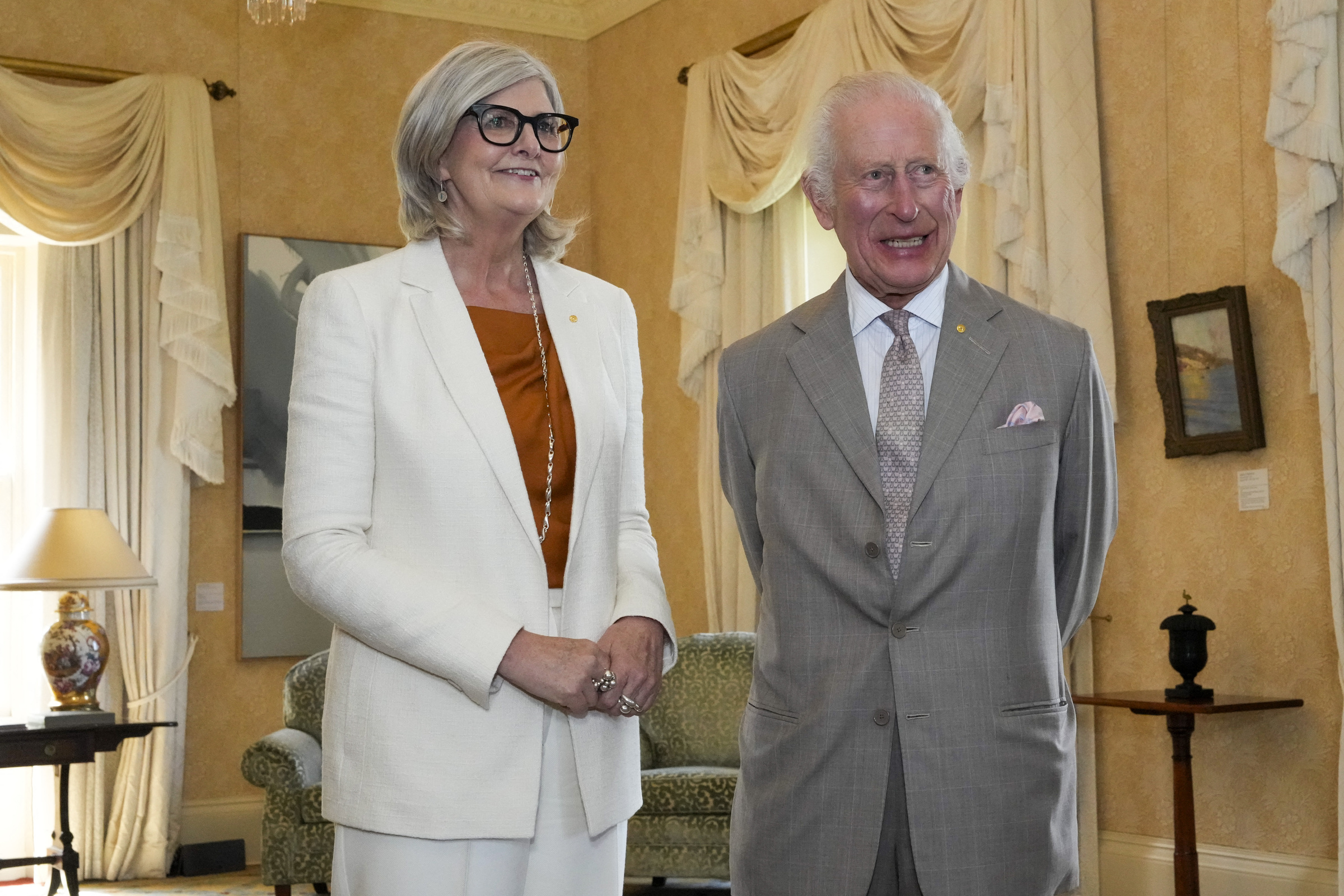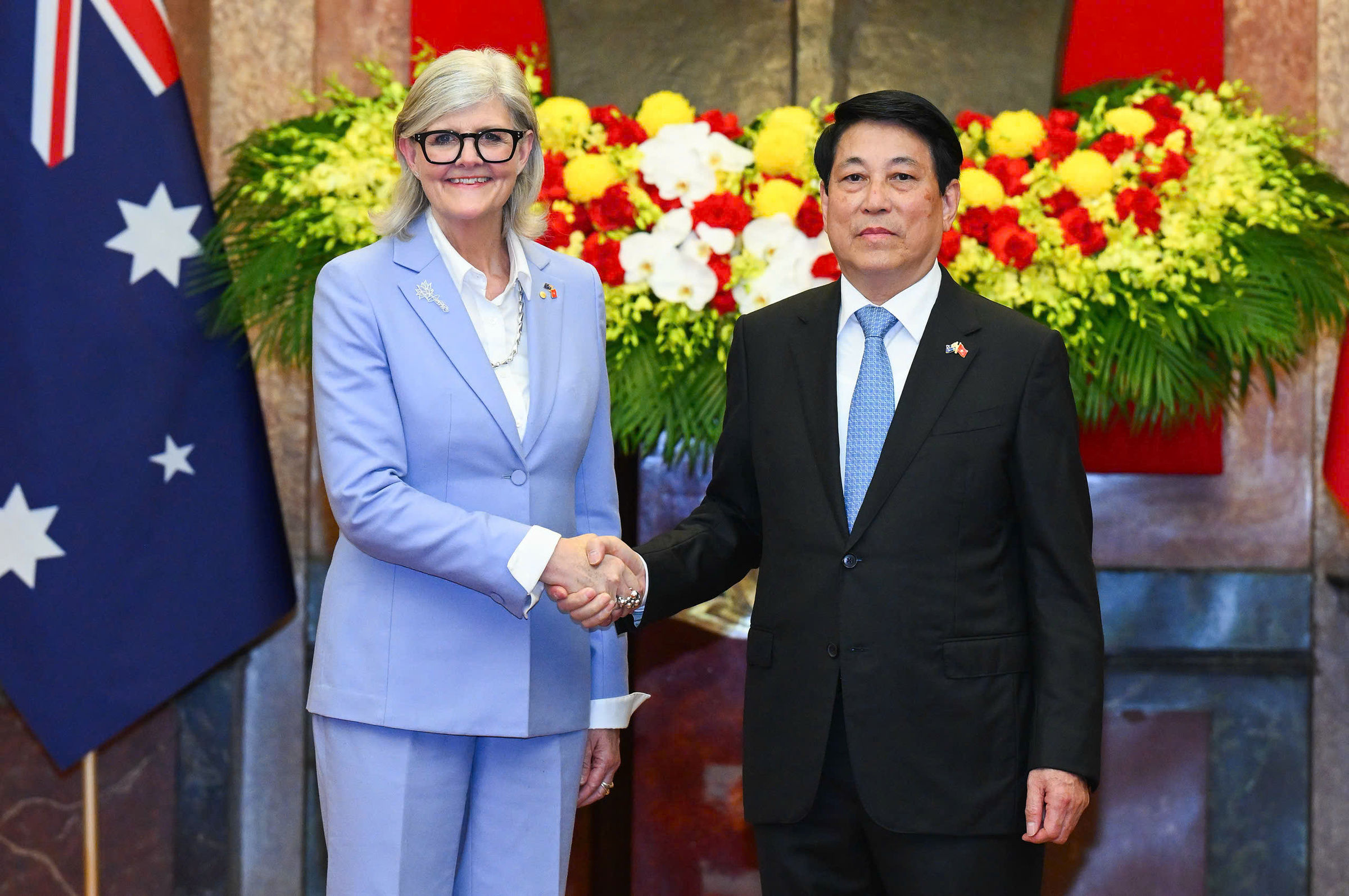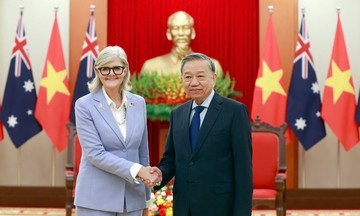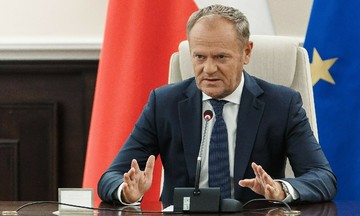When six self-governing British colonies in Oceania federated to form Australia in 1901, a new constitution was enacted. It outlined how the newly independent nation, while remaining part of the Commonwealth, would be governed.
Australia became a constitutional monarchy, maintaining a constitutional link with the UK. Its laws, state ceremonies, and executive branch all bear the mark of British history. While the British monarch is recognized as Australia's head of state, all powers are exercised through the governor-general, in accordance with the Australian constitution.
Chapter one of the Australian constitution establishes the Parliament as the legislative body, comprising the British monarch, the Senate, and the House of Representatives. Chapter two establishes the office of the governor-general, appointed by the monarch on the advice of the Australian prime minister, to exercise the monarch's powers within the Australian political system.
 |
Sam Mostyn (center) is sworn in as Australia's governor-general on 1/7/2024, becoming the second woman in history to hold the position. Photo: AAP |
Sam Mostyn (center) is sworn in as Australia's governor-general on 1/7/2024, becoming the second woman in history to hold the position. Photo: AAP
Within this structure, the governor-general acts as Australia's de facto head of state, typically acting on the advice of the incumbent government.
During the early 20th century, the position was often held by British aristocrats and was largely ceremonial. Today, the role is typically filled by prominent Australians from the fields of law, military, politics, business, or academia.
The current governor-general, Sam Mostyn, was sworn in on 1/7/2024. A businesswoman and community leader, she has held executive and management positions across various sectors, including business, sports, climate change, the arts, policy, and non-profit organizations.
In 2024, Mostyn was appointed a Companion of the Order of Australia (AC) for her contributions to social justice, gender equality, and the fields of sports, culture, business, reconciliation, and environmental sustainability. She was previously appointed an Officer of the Order of Australia (AO) in 2021.
For her advocacy of gender equality and inclusion, sustainable development, and climate action, Mostyn received the 2020 United Nations Day Honour Award and an honorary Doctor of Laws from the Australian National University in 2018.
 |
Australian Governor-General Sam Mostyn (left) greets King Charles III in Sydney during the monarch's visit to Australia in 10/2024. Photo: AFP |
Australian Governor-General Sam Mostyn (left) greets King Charles III in Sydney during the monarch's visit to Australia in 10/2024. Photo: AFP
The governor-general's term is typically five years, although there have been exceptions. The constitution empowers the governor-general to approve legislation, issue writs for elections, convene and dissolve Parliament, or call joint sittings of both houses. The governor-general is also commander-in-chief of the Australian Defence Force, although operational command rests with the government.
In addition, the governor-general possesses "reserve powers" not explicitly outlined in the constitution but based on convention, such as the power to appoint or dismiss the prime minister in exceptional circumstances. The most notable exercise of this power was in 1975, when Governor-General John Kerr dismissed Prime Minister Gough Whitlam.
Beyond constitutional powers, the governor-general performs numerous ceremonial duties. These include opening new parliamentary sessions, presiding over the swearing-in of the prime minister, ministers, and judges, receiving heads of state, and awarding honors to citizens for distinguished service. Former Governor-General Thomas Denman and his wife played a key role in establishing Canberra as the capital in 1913, a symbolic event in the nation's history. These ceremonies reinforce the governor-general's role as a national representative.
 |
President Luong Cuong and Australian Governor-General Sam Mostyn at the Presidential Palace on 10/9. Photo: Giang Huy |
President Luong Cuong and Australian Governor-General Sam Mostyn at the Presidential Palace on 10/9. Photo: Giang Huy
Connecting with the community is another significant aspect of the governor-general's role. They regularly visit and meet with organizations and individuals contributing to society, offer support during national disasters, participate in events both domestically and internationally, and serve as patrons for various cultural, sporting, and humanitarian organizations. The governor-general also extends congratulations to citizens on special occasions, from 100th birthdays to significant wedding anniversaries.
In practice, most of the governor-general's powers are exercised through the Federal Executive Council, composed of government ministers who serve as official advisors. This ensures that the governor-general does not act unilaterally but typically makes decisions in accordance with the advice of the incumbent government.
With these responsibilities, the governor-general of Australia serves as a pillar of stability within the Australian political system, preserving the monarchical tradition while ensuring that Parliament remains the nation's highest authority, according to the Museum of Australian Democracy.
Thanh Danh (Compiled)












